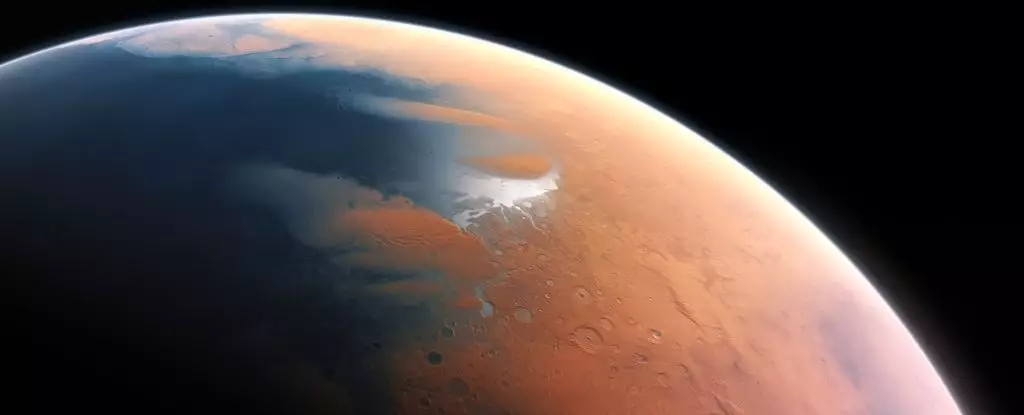Mars, often viewed as a desolate and dry planet, may have once been a vibrant world rich in liquid water. The implications of this possibility have captivated scientists and the public alike, with recent research shedding light on the existence of what could have once been expansive oceans. In a groundbreaking study involving ground-penetrating radar (GPR) technology, researchers have unveiled evidence supporting the idea that ancient Mars not only held lakes but potentially oceanic bodies of water. This article delves into the new findings regarding the Martian water landscape and their significance for understanding the planet’s history and potential for past life.
The recent data collection carried out by the Chinese National Space Administration’s Zhurong Mars rover has opened a new chapter in our understanding of Mars’ watery past. The rover’s GPR system probed the Martian subsurface, uncovering structures reminiscent of ancient shorelines. The identification of materials layer sloping toward a supposed shoreline is a clear indication of a once-thriving aquatic environment. Geologists, including Benjamin Cardenas and Michael Manga, believe that these geological features bear striking similarities to the beaches and deltas found on Earth, suggesting that Mars might have hosted conditions conducive to life.
Manga’s team has reported evidence showing that formations aligned with the hypothesis of a long-standing ocean, referred to as Deuteronilus, provide insight into the planet’s hydrological dynamics. The layered materials and their configurations indicate sedimentation processes similar to those seen in Earth’s oceans, enriching the narrative that Mars was not always the arid landscape we see today.
Understanding the water cycle on Mars is critical to the broader narrative of the planet’s evolution. Previous studies have argued that Mars had a water cycle similar to Earth’s for millions of years, shaping the landscape through erosion, sediment deposition, and tidal forces. The latest findings imply that significant bodies of water could influence climate and geological transformations over extended periods. This raises pressing questions about the quantity and duration of water’s presence on the Martian surface.
Geophysicist Michael Manga emphasizes that the ocean’s existence would have been fundamental in shaping Mars’ climate systems. Tidal patterns and ocean currents generated by the Martian atmosphere’s dynamics could have created diverse ecological niches. However, the disappearance of this water remains shrouded in mystery, prompting speculations about the potential absorption of liquid water into the planet’s interior—a phenomenon that may still harbor vast reservoirs yet to be accessed.
One of the most thrilling aspects of this research is its contribution to the dialogue surrounding the planet’s habitability. The presence of liquid water, especially in coastal settings where land meets water, creates favorable conditions for life. On Earth, life is believed to have begun in such environments where biochemical interactions could flourish.
The recent discoveries allow scientists to refine their search for signs of ancient life on Mars, particularly in zones that would have previously supported rich ecosystems along the shores of the hypothetical ocean. As Manga points out, understanding where and when habitable environments emerged can guide future exploratory missions on Mars, potentially leading to the discovery of preserved biosignatures.
As promising as the recent findings are, they represent just a fragment of the larger puzzle regarding Mars’ water history. Future research initiatives must employ advanced technologies to delve deeper into Martian geology and assess the implications of its ancient hydrous environments. Ground-penetrating radar is a powerful tool, but coupling it with satellite imagery and in-situ experiments may yield additional insights about the planet’s submerged secrets.
Another important aspect of future explorations should include modeling the dynamics of ancient Martian tides and waves. Understanding how these forces would have influenced sedimentation and local climates can bring clearer contexts to the geological formations observed today.
The narrative surrounding Mars is rapidly evolving. The evidence supporting the existence of ancient oceans reshapes our perception of the red planet as a once-mystical world. With the potential for past habitability, Mars continues to challenge our understanding of planetary formation and the conditions necessary for life. As researchers connect the dots in Mars’ watery history, we inch closer to uncovering the mysteries that lie beneath its dusty surface, igniting our cosmic curiosity for what once was and what might still be waiting to be discovered.

